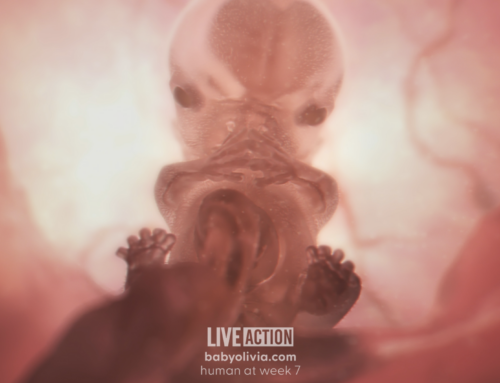Liana Gordon:
 The Canadian Centre for Bioethical Reform is in the middle of their largest tour ever this summer, bringing never-before-seen photos of abortion to the streets for the Canadian public.
The Canadian Centre for Bioethical Reform is in the middle of their largest tour ever this summer, bringing never-before-seen photos of abortion to the streets for the Canadian public.
According to their website, the CCBR is an “educational human rights organization dedicated to speaking out on behalf of the youngest and most vulnerable members of the human family.” Part of that education, they state, is exposing the truth about abortion — a truth which can only be fully revealed with the aid of photos.
The CCBR states that part of the effort in bringing an end to abortion in Canada is to “make victims of abortion visible, to humanize those who have been dehumanized — to bring the culture face to face with the victims of abortion.”
The tour, which is entitled, “The Faces of Abortion” began May 11 in Edmonton and will hit 27 cities in all ten provinces. The “Faces of Abortion” tour wraps up with events in Vancouver and Lower Mainland British Columbia July 11-15 and the Okanagan Valley in British Columbia August 11-19.
Alongside daytime activism at each stop, there will be an evening presentation given by CCBR speakers on the important role of abortion victim photography in activism. CCBR teams with local pro-life and church groups to bring “The Faces of Abortion” to local communities. In Hamilton, for example, Campaign Life Coalition teamed with CCBR, while in Toronto and Ottawa, local Reformed churches hosted evening presentations.
Keturah Dumaine, CCBR’s Eastern executive assistant, told The Interim that “the reason for the focus on the face specifically is that there is a human connection that can only be made through the face.” Although traditionally abortion victim photography showcases the entire body of the aborted children, the tour will specifically be showcasing photos of the faces of the tiny victims of abortion.
Dumaine says, “obviously abortion is an act which violently tears apart the body of a child. When you see the severed arms and legs of a child, that’s horrifying. But it doesn’t compel us in the same way that seeing the face of a child who has been killed through abortion does.”
With 57 interns across Canada, the CCBR maintains that it is “breaking new ground” by reaching provinces, such as Nova Scotia and Prince Edward Island, that have been relatively untouched by abortion victim photography and pro-life activism in recent years.
The use of abortion victim photography in street activism has drawn criticism from several abortion lobby groups, which maintain that they are too graphic for non-consenting individuals to look at, and can trigger those who have been impacted by abortion or miscarriage.
One group, The Viewer Discretion Legislation Coalition, has lobbied for mandatory warning labels on abortion victim photography, pushing for them to be removed from the streets. The VDLC has been vocal about their public disagreement with organizations such as the CCBR. According to their website, they aim to “change Canadian law to prohibit the use of such graphic images in public spaces.” Communities such as London and Calgary currently prevent abortion victim photography from being distributed to houses unless they are contained in an opaque envelope with a clear warning about the contents inside.
In response to the criticism surrounding the usage of abortion victim photography, Dumaine states that the CCBR acknowledges that abortion victims are “not nice to look at.” She maintains that it is important to have compassion for those who are affected, and that the main goal of their activism, “is not to trigger people or anything like that, but it’s to spare children’s lives in the future, to spare children who might be killed through abortion and to spare more women that trauma.”
One of the stops on the tour in Toronto will be held in Westminster Chapel at High Park, which stands out amongst the status quo of churches in Toronto by maintaining an outspoken pro-life stance. Pastor Russ Hiebert, elder and pastor at Westminster Chapel, told The Interim, “As Christians, we believe that human beings are created in the image of God and therefore to take a human life is a very serious thing. We care that mothers with an unplanned pregnancy hear the truth about the life inside them.”
Westminster Chapel is an example of a church which has taken a lead in promoting preborn rights. In response to this growing need, Hiebert says, “It takes knowledge and understanding to know how to speak to these mothers in their time of need. That requires training and so we support efforts to provide this training.”
Vince Ward, pastor and teaching elder at Ottawa Reformed Church – another location that hosted a “Faces of Abortion” talk — told The Interim that “the level of engagement of evangelical churches in defense of the preborn is abysmal,” and said, “If the majority of evangelicals attended the (National) March for Life and Life Chain voted only for pro-life candidates or supported the pregnancy care centres, we could turn the tide from this culture of death to a culture of life in Canada.”
Dumaine said the “The Faces of Abortion” is this their largest tour to date and that is indicative of a “growing and thriving resistance movement to the culture of death.”




